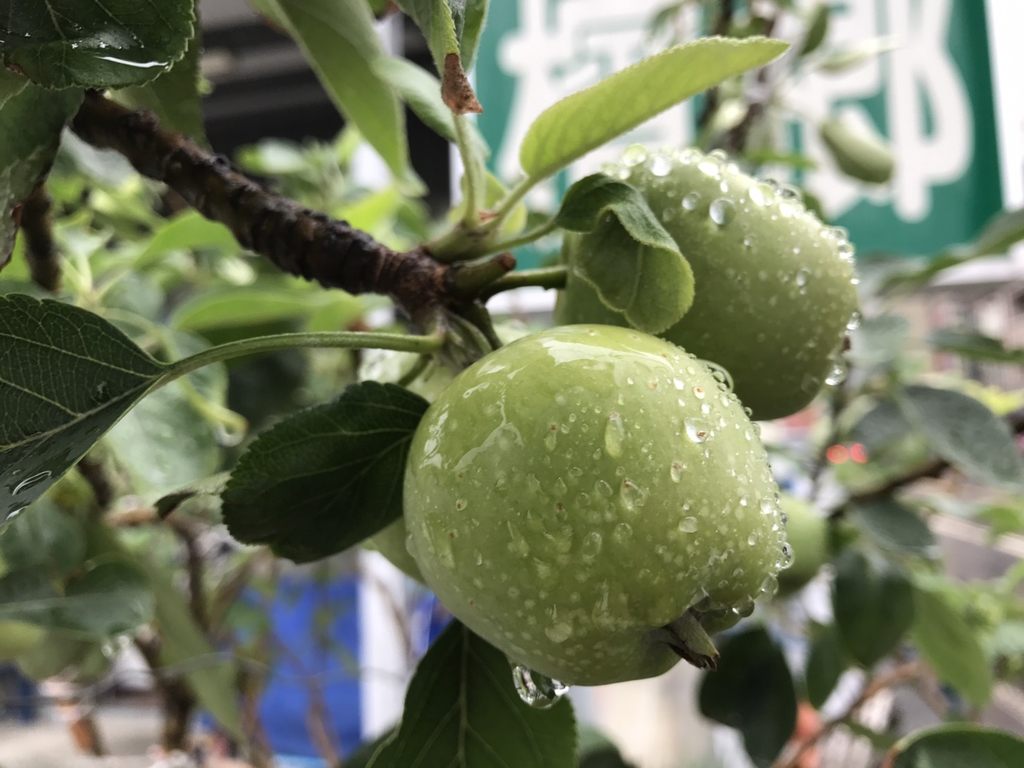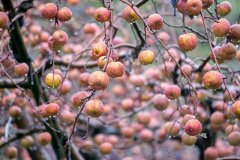How to grow tropical green apple variety Ji apple? When is the fruit thinning period of Ji Apple?
At present, there are tropical green apples, tropical yellow apples, five-claw apples, and Ji apples that are suitable for growing in the flatlands of Taiwan. at present, Blue Mountain has planted and confirmed that the tropical green apples have good results in the north. The other two kinds will have to be planted again to know. Let's take a look at the method of potted apple cultivation. (netizens are also welcome to provide information exchange!
Tropical green apples are native to Iran and Saudi Arabia in Central Asia, and have good heat and drought tolerance, so the fruit rate in northern Taiwan is very good (uncertain in the south), and the plants are not tall, so they are very suitable for garden or pot cultivation at home. It is also interesting to grow coffee as a leisure farm or garden, often attracting curious eyes.
In northern Taiwan, tropical apple trees naturally shed their leaves at low temperatures in winter, and the nutrients on the leaves are returned and stored on the branches, and there are enough nutrients for normal flower bud differentiation. (in the south, if the leaves do not fall in winter, the leaves need to be removed manually). It begins to bloom about after the Lunar New year.
The whole plant is full of pink flowers, which is beautiful and ornamental. If it rains during flowering, pollen will be washed away and pollination will be affected, resulting in a decrease in fruit rate.
Each branch can provide limited nutrients, each branch can only supply 1-2 apples to grow, so when the fruit rate is too good and there are 4-5 small apples, it is recommended to "fruit thinning" and pick off the excess apples as soon as possible. let nutrients concentrate on growing apples, so that the flavor of the apples will be delicious, otherwise they will only produce a bunch of wrinkled and sour little apples.
It is suggested that the timing of fruit thinning (fruit picking) should be carried out before March, because the continuous overcast and rain in April can easily lead to physiological fruit drop due to lack of light (April fruit drop). Early fruit thinning can concentrate nutrients, and small apples with a strong head will not be afraid of rainy weather.
About May and June, the turquoise peel of tropical apples begins to have white fog, and when it turns to a slightly red pericarp, it is ripe and ready to be harvested and eaten.
The taste is sour and sweet, similar to the taste of green apples bought outside, but it is a sense of freshness that no matter how much money can buy.
Due to the dry climate in Central Asia, when planting tropical apples, special attention should be paid to good drainage and air permeability of the soil. It is suggested that breathable materials such as plant pottery stone should be added to the soil so that the root system can grow vigorously and promote the health of the plant.
After harvest, apples can begin to apply growth fertilizer to promote the growth of branches and leaves and store enough nutrients. After autumn, high-phosphate fertilizer is used to supplement the phosphate fertilizer needed for flowering and fruiting, and high-phosphate fertilizer is also needed from spring to harvest, so that the fruit will accumulate enough nutrients to turn sweet and will not taste sour.
Tropical apple cultivation is suitable for all-day environment, balcony cultivation should be placed in the first row near the periphery as far as possible, the area with good light.
The data show that apples are cross-pollinated plants, which need to be planted two at a time to bear fruit, but according to the tropical apple trees at the betel nut stall in front of the Lanshan observation store, it is found that although only one tree is planted, it still bears fruit year after year. Maybe tropical apples are not cross-pollinated. The reason may be that tropical apples bloom for a long time and continue to bloom even in May. Therefore, the restriction of cross-pollination was broken.
When there is not enough room for home cultivation, you can use flowerpots, but it is recommended that flowerpots should be large enough to grow tropical apples, otherwise they will not grow fruit.
It is a great home fruit tree. I suggest you also try to experience the fun of picking fruit at home.

- Prev

Apple alpine planting technology, apples are not waxed why there is honey?
Alpine agriculture has been burdened with a bad reputation for eating the flesh and blood of mountain forests for many years. Is there any way to find a balance and change the mode of coexistence with mountain forests under the existing environment and agricultural economy? this is what he and the owners of apple orchards are groping for. This has a lot to do with potted apple cultivation.
- Next

Japanese Aomori apple planting method? Aomori apple fertilization and pollination is when
The artificial planting process, which lasts for a whole year, is complicated, but it is the most important part of producing delicious Aomori apples. It is said that an average of 10 mu (1,000㎡) of apple orchard takes about 223 hours of operation time, which is a very experienced production technology. End of January
Related
- Fuxing push coffee new agricultural production and marketing class: lack of small-scale processing plants
- Jujube rice field leisure farm deep ploughing Yilan for five years to create a space for organic food and play
- Nongyu Farm-A trial of organic papaya for brave women with advanced technology
- Four points for attention in the prevention and control of diseases and insect pests of edible fungi
- How to add nutrient solution to Edible Fungi
- Is there any good way to control edible fungus mites?
- Open Inoculation Technology of Edible Fungi
- Is there any clever way to use fertilizer for edible fungus in winter?
- What agents are used to kill the pathogens of edible fungi in the mushroom shed?
- Rapid drying of Edible Fungi

